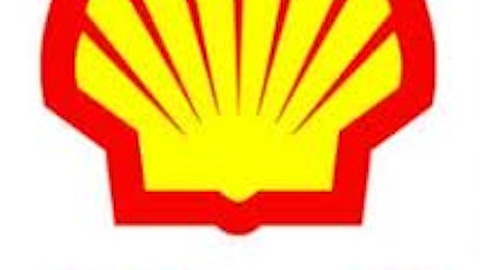LONDON — Successful investors use a disciplined approach to picking stocks, and checklists can be a great way to make sure you’ve covered all the bases.

1. Prospects
The oil price is driven by supply and demand for oil, which in turn is affected by geopolitics and the health of the global economy. The costs of production, and massive capital expenditures involved in exploration, complete the financial dynamics.
Royal Dutch Shell plc (ADR)(NYSE:RDS.B) has mature upstream operations that deliver solid cash flow, and reserves that cover over 10 years of current production.
The company has invested heavily in natural gas and LNG production. Big investment in U.S. shale gas has not (yet) paid off as the glut of supply depressed prices, but it has added to Royal Dutch Shell plc (ADR)(NYSE:RDS.B)’s reserves.
The search for new resources has pushed exploration into deep waters. Royal Dutch Shell plc (ADR)(NYSE:RDS.B) has under-sea fields in Latin America and Asia with the Arctic as a longer-term project. Reserves declined by 5% last year following a slight decline in 2011.
2. Performance
Revenues and earnings fluctuate, due to the factors listed above. Operating margins have varied between 6.6% and 11.6% over the past eight years, with return on capital between 12% and 33%.
Royal Dutch Shell plc (ADR)(NYSE:RDS.B)’s scale has enabled it to deliver flat or increasing dividend payments throughout that period.
3. Management
Royal Dutch Shell plc (ADR)(NYSE:RDS.B)’s CEO Peter Voser has been with the company for 30 years, becoming CEO in 2009, five years after the company’s reputation was tarnished by misreporting of reserves. He has driven its geographical and technological diversification, including the push into natural and unconventional gas.
Voser has £20 million worth of shares, while the finance director has £10 million.
4. Safety
Reserves underpin the company’s future cash flow. In each of the past two years, cash from operations has covered the big outflows of tax, dividends and capital expenditure, and allowed for $1 billion worth of share buybacks.
Net gearing is a low 10%, and tangible net worth is over 80% of market cap.
BP plc (ADR) (NYSE:BP)‘s Gulf of Mexico disaster highlights the operational risks in the oil business. The investigation into oil price-fixing has the potential to grow to LIBOR-scandal proportions, but not for some time.
5. Valuation
Shell’s projected price-to-earnings ratio of 8.4 is well below the FTSE 100 average. Its yield of 5% is one of the highest on the market and high for Shell historically.
Conclusion
Reserve replacement and the U.S. oil glut are strong headwinds, but the market seems not to fully appreciate Shell’s cash flow machine. It’s a core holding for oil and gas investors.
The article The Stock Picker’s Guide to Royal Dutch Shell originally appeared on Fool.com.
Motley Fool contributor Tony Reading owns shares in Shell but no other shares mentioned in this article. The Motley Fool has no position in any of the stocks mentioned.
Copyright © 1995 – 2013 The Motley Fool, LLC. All rights reserved. The Motley Fool has a disclosure policy.
